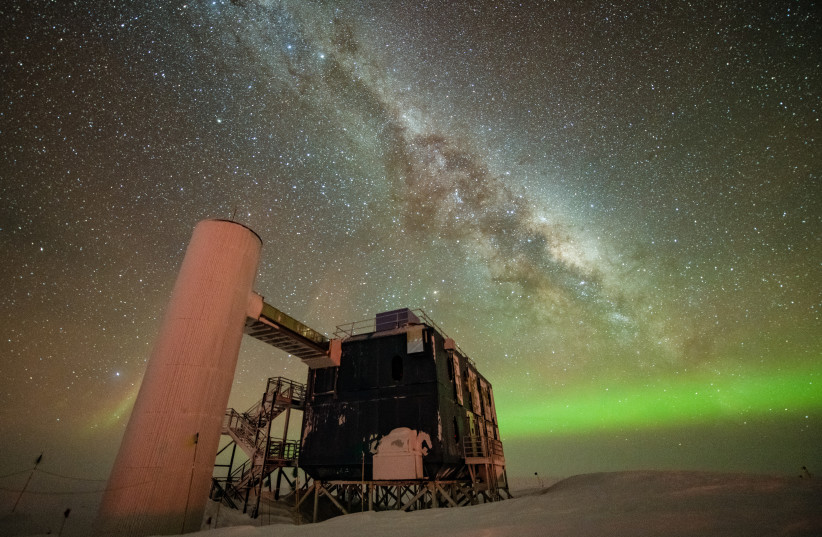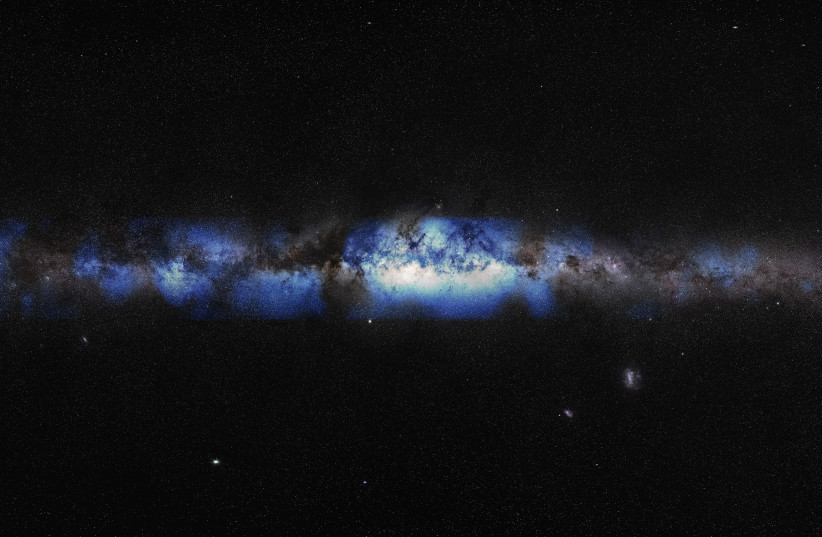For first time, scientists use neutrinos to create 'ghostly' map of Milky Way
The new mapping method may allow astronomers to study previously obscured parts of the galaxy and of the universe.
Scientists have mapped the Milky Way galaxy with high-energy neutrinos for the first time, the IceCube Collaboration, an international group of over 350 scientists, announced on Thursday. The research was published in the peer-reviewed journal Science.
Neutrinos are the most abundant fundamental particles that have mass in the universe and have been detected from many sources. They are among the least understood particles in the standard model of particle physics.
The particles are special as they have little mass and no electric charge and can travel straight through the earth as they interact very weakly with other matter.
The high-energy neutrinos, which have energies millions to billions of times higher than those produced by the fusion reactions that power stars, used to create the image were detected by the IceCube Neutrino Observatory at the Amundsen-Scott South Pole Station.
The IceCube Neutrino Observatory takes up a cubic kilometer of Antarctic ice with over 5,000 light sensors to search for signs of high-energy neutrinos coming from our galaxy and beyond.
How did the researchers map the galaxy with neutrinos?
The researchers focused on the southern sky, where the main bulk of neutrino emission from the galactic plane is expected near the center of the Milky Way. In order to filter out the background of muons and neutrinos produced by cosmic-ray interactions with Earth's atmosphere, researchers from Drexel University developed analyses focused on "cascade events."
When neutrinos pass through the detector, they can leave signals, referred to as "events," either as tracks or cascades. Tracks occur when a neutrino collides with matter in or near the detector, while cascades occur when all or most of the neutrino's energy is deposited in a small region, creating a nearly spherical event.

While it is harder to measure the direction from which a neutrino came in a cascade event, the atmospheric backgrounds in such cases are small and relatively uniform meaning it's easier to filter out.
The final piece of the puzzle was machine learning methods developed by researchers from TU Dortmund University that improve the identification of cascades and the identification of their direction and energy reconstruction. The new methods allowed for an analysis that is three times more sensitive than the previous search conducted for neutrinos from the galactic plane.
The researchers used a data set of 60,000 neutrinos detected over 10 years to create the ghostly map of the Milky Way, 30 times as much as the data used in a previous analysis of the galactic plane.
While the Milky Way has been imaged using radio waves, optical light, and gamma rays, this is the first time the galaxy has been imaged in a way other than electromagnetic radiation.
“Observing our own galaxy for the first time using particles instead of light is a huge step,” said Naoko Kurahashi Neilson, professor of physics at Drexel University, IceCube member, and Sclafani’s advisor. “As neutrino astronomy evolves, we will get a new lens with which to observe the universe.”
According to Denise Caldwell, director of NSF's Physics Division, the capabilities of the IceCube detector coupled with new data analysis tools enabled the researchers to create this new image of the galaxy. "As these capabilities continue to be refined, we can look forward to watching this picture emerge with ever-increasing resolution, potentially revealing hidden features of our galaxy never before seen by humanity," said Caldwell.
“The strong evidence for the Milky Way as a source of high-energy neutrinos has survived rigorous tests by the collaboration,” said Ignacio Taboada, a professor of physics at the Georgia Institute of Technology and IceCube spokesperson. “Now the next step is to identify specific sources within the galaxy.”
How the new findings could change astronomy
The new mapping method may allow astronomers to study parts of the galaxy and of the universe that are obscured by gas and dust that were previously inaccessible by mapping methods using light. Scientists expect to find neutrinos where charged particles accelerate in extreme magnetic fields and collide with other particles, such as in star-forming regions.
The findings published on Thursday come after the IceCube collaboration traced neutrinos to the NGC 1068 (Messier 77) galaxy for the first time in November.




No comments:
Post a Comment